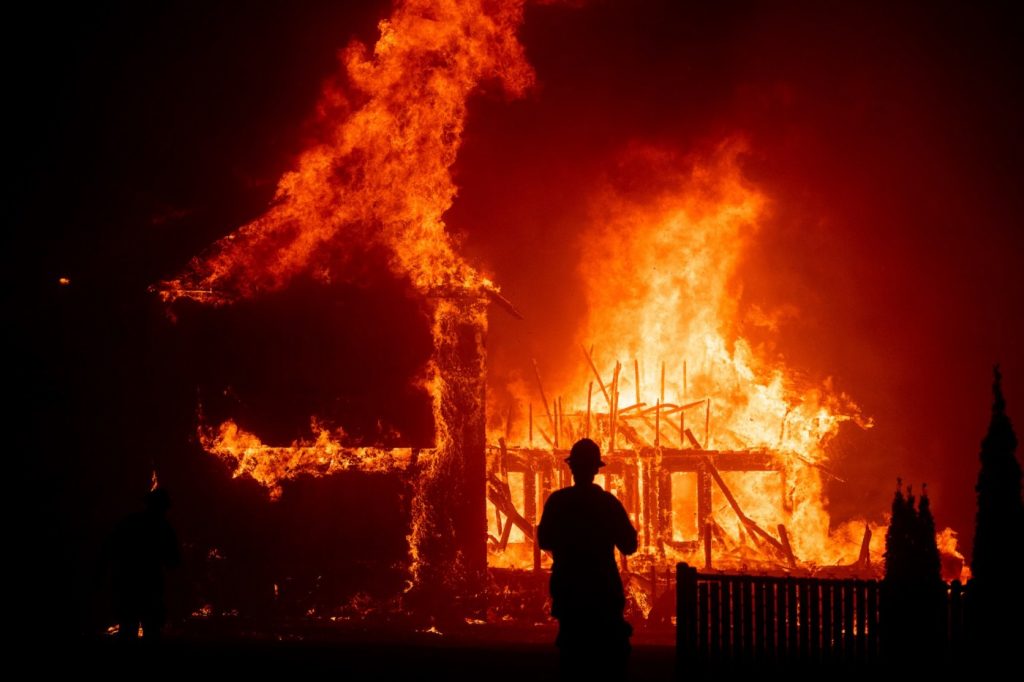Struggling to find affordable homeowner’s insurance because you live in a fire-prone area? A new proposal by state regulators could soon make it much easier to get coverage. But consumer advocates worry that it would also mean steep rate hikes for many Californians.
This week, California Insurance Commissioner Ricardo Lara revealed more details about his plan to stabilize the state’s faltering home-insurance market. In exchange for allowing insurers to raise rates based on the growing threat of climate change — long an industry demand — companies would agree to expand coverage in parts of the state with the greatest wildfire risk.
Those areas would include vast swaths of the North and Central coasts, the Sierra Nevada Mountains and most of far Northern California. In the greater Bay Area, insurers would be required to write more policies in Marin, Napa and Santa Cruz counties, as well as parts of San Mateo and Sonoma counties and a sliver of Santa Clara County.
Insurers would also have to offer new policies for fire-risk homes in more urban areas such as the Oakland Hills and Los Gatos.
“We are addressing this crisis of insurance availability head-on,” Lara said in a statement.
In recent years, insurers have ended coverage for hundreds of thousands of policyholders in fire-prone areas such as Wine Country and the Santa Cruz Mountains. Many of those homeowners, along with others unable to find traditional policies, have been left to buy into the exorbitantly expensive FAIR Plan, the state’s insurer of last resort.
Meanwhile, some of the largest carriers, including State Farm and Allstate, have stopped writing new home insurance policies anyhwere in California. That means less competition between insurers, likely contributing to recent rate spikes.
Lara’s plan aims to entice insurers to cover more homes by allowing them to justify overall rate increases using complex modeling programs that calculate the future risk of disasters. Currently, the state insurance department requires insurers to determine rates based on historical damages, which the industry argues has kept rates too low in many areas to offset the risks of worsening fire seasons. All other states already allow insurers to use forward-looking “catastrophe modeling,” and many have higher rates than California.
In return, insurers must work to collectively cover 85% of homes across designated fire-risk areas.
The state selected the areas by identifying fire-prone ZIP codes where more than 15% of homeowner policies were covered through the FAIR Plan, as well as ZIP codes where incomes are low and insurance premiums are high. It also identified counties where more than 20% of policies are considered high risk due to fire danger.
Outside of those areas, insurance companies must also take many homeowners in more urban areas who are currently on the FAIR Plan.
Seren Taylor, vice president of the Personal Insurance Federation of California, an industry group, said that he expects many insurers, who negotiated much of the plan, to agree to the deal. What’s less clear, Taylor said, is whether State Farm, which has the most policies in the state, would start writing new coverage as it already has such a large portion of the market share at around 20%.
“I would expect everyone else will be in a position where they can grow and take advantage of this,” Taylor said.
Earlier this year, State Farm said it was working with regulators on the proposed regulation but had no plans to write new policies. It said it would “evaluate the need for any additional business actions as market conditions change.”
Consumer advocates, meanwhile, are pushing back hard on the proposed reforms, arguing that the use of catastrophe modeling would lead to unfair rate hikes through an opaque and potentially discriminatory process.
They’ve also raised concerns that smaller insurance companies and new carriers entering the market would be exempt from some requirements. And they suggested the insurance department might be unwilling to enforce the new coverage mandates after an initial two-year period to phase in the changes.
“After two years, if insurance companies can say they can’t meet their goals the commissioner can just move the goal posts,” Carmen Balber, executive director of Consumer Watchdog, said in a statement.
Related Articles
San Mateo County approves $40 million for seven affordable housing projects
San Jose makes it legal to sell your ADU separately from your home
Milpitas approves building new townhomes, ADUs near Great Mall
California’s top wages only buy 61% of typical home
Too much affordable housing? Concord rejects low-income project downtown, draws state scrutiny
Insurance department officials refuted the claim, citing the agency’s authority to reject proposed rate increases and revoke the ability to use catastrophe modeling by companies that don’t follow through on their coverage responsibilities.
“We have strong enforcement tools under existing law to hold insurance companies accountable, and we will,” said agency spokesperson Michael Soller.
The department plans to hold a June 26 virtual workshop to gather public input on the proposal. The agency has the final say on the plan, which it intends to approve by the end of the year.


